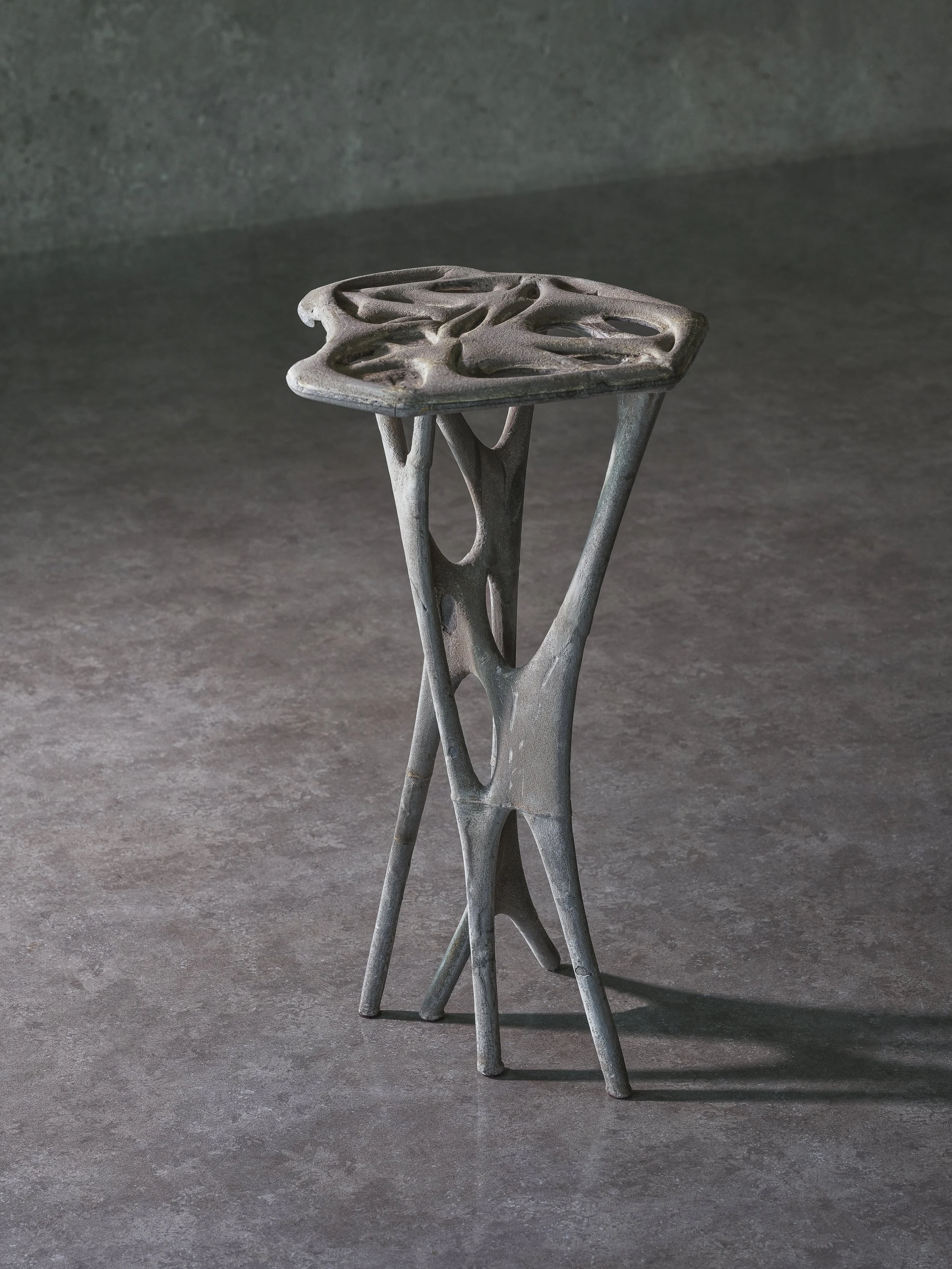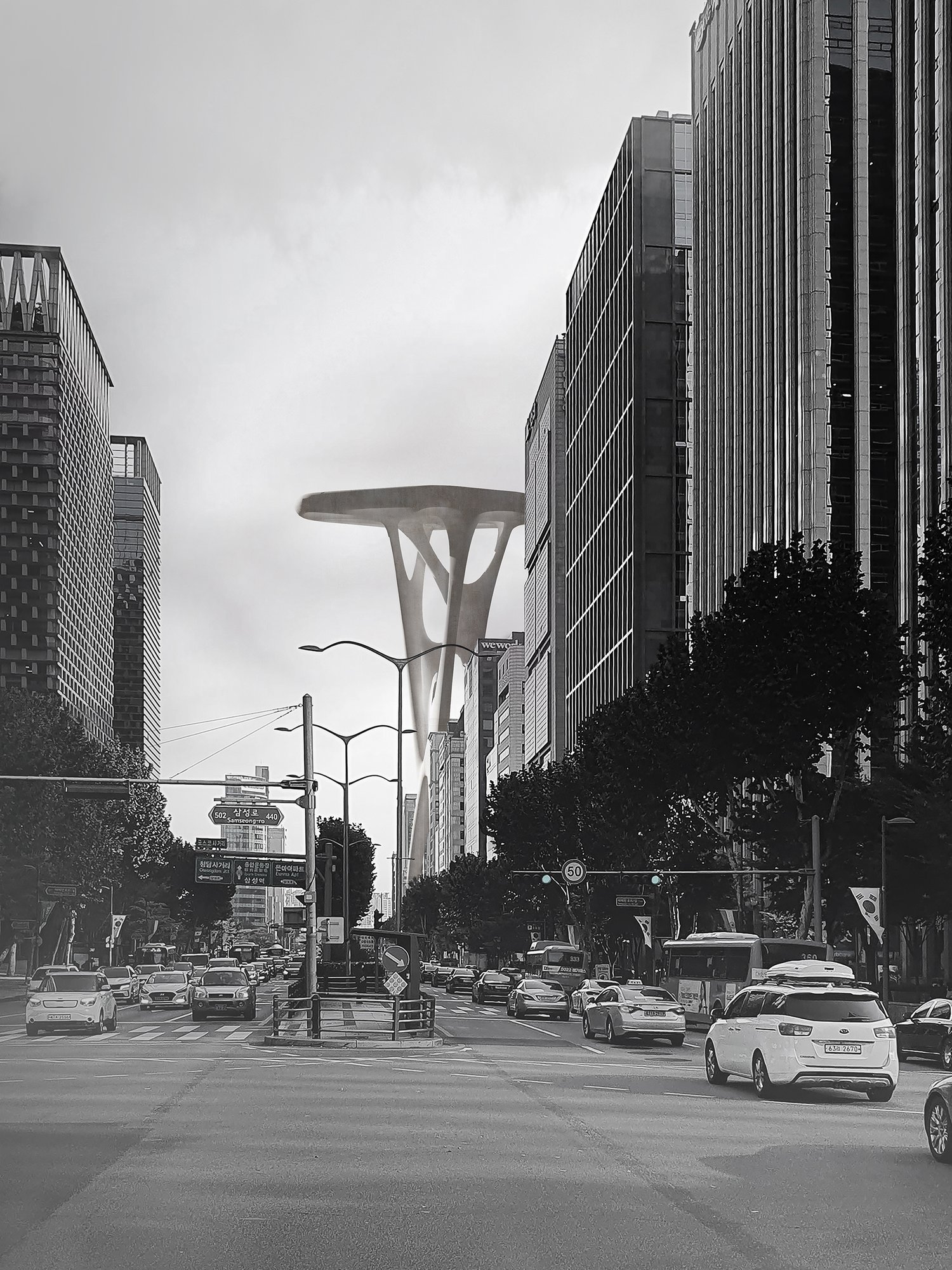Alien Table
2019
에일리언 테이블
The Alien Table presents a new paradigm in architecture through the integration of algorithmic design and 3D printing technology. It departs from traditional inefficient component systems and construction methods, proposing an innovative approach that maximizes structural stability and construction efficiency. In particular, it explores new architectural possibilities by organically integrating complex forms—such as curves—that were previously difficult to realize with conventional techniques.
Design Process
Construction Process
From a material perspective, the project also carries significant implications. Concrete inherently offers high formability if appropriate formwork can be created; however, in practice, its use has been largely limited by economic priorities. In contrast, Alien Table actively leverages the flexibility and formal freedom of concrete through 3D printing technology.
Importantly, Alien Table is not designed for a specific function. Depending on its scale, it may serve as furniture like a table, or as a structural element or architectural form. Thus, it stands as a reinterpretation of organic architecture through contemporary technologies and can be viewed as a research study for the future of architectural design.
In this context, Alien Table generates diverse morphological variations through a process of multi-objective optimization. Variables such as structural performance, the number of supports, and the size of the surface are algorithmically adjusted to produce countless outcomes, while the architect is responsible only for aesthetic decisions that cannot be determined by the computer. This represents a fundamental shift from traditional design methodologies.
프로젝트는 건축 재료 측면에서도 의미가 크다. 콘크리트는 본래 거푸집만 만들 수 있다면 원하는 형태를 자유롭게 구현할 수 있는 재료이다. 그러나 실제 건설 산업에서는 경제성을 우선시하여 이 가능성이 충분히 활용되지 못했다. 이에 반해 에일리언 테이블은 3D 프린팅 기술을 통해 콘크리트의 유연성과 형태적 자유로움을 적극적으로 구현했다.
에일리언 테이블은 특정 기능을 전제로 설계된 것이 아니다. 스케일에 따라 테이블과 같은 가구가 될 수도 있고, 하나의 구조물이나 건축물이 될 수도 있다. 따라서 에일리언 테이블은 최근 기술을 이용하여 유기적 건축을 재해석한 결과물이자, 미래 건축을 위한 연구적 스터디로 볼 수 있다.
에일리언 테이블은 알고리즘 설계와 3D 프린팅 기술의 융합을 통해 건축 분야에 새로운 패러다임을 제시한다. 이는 기존의 비효율적인 부재 시스템과 시공 방식에서 탈피하여, 구조적 안정성과 시공 효율성을 극대화하는 혁신적인 접근 방식을 제시한다. 특히, 곡면과 같이 복잡한 형상을 기존 방식으로는 구현하기 어려웠던 건축 요소들을 유기적으로 통합하여 새로운 건축적 가능성을 모색한다. 프랭크 로이드 라이트가 주창한 ‘부분이 전체에 속하고, 전체가 부분에 속하는’ 유기적 건축의 이상을 현실화할 수 있는 잠재력을 시사한다.
이러한 맥락에서, 에일리언 테이블은 알고리즘을 통한 다목적 최적화(Multi-Objective Optimization) 과정을 통해 다양한 형태적 변형을 생성한다. 구조 성능, 다리의 수, 상판 크기 등의 변수에 따라 수많은 결과물이 도출되며, 건축가는 컴퓨터가 결정할 수 없는 미적인 판단만을 수행한다. 이로써 전통적인 설계 방식과 근본적으로 다른 접근 방식을 보여준다.
War of the Worlds, 2005
Arrival, 2016





